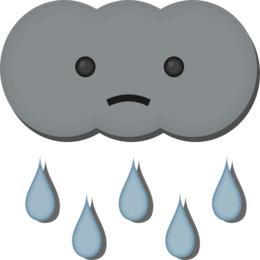Seasonal Affective Disorder
January 8, 2019

Seasonal Affective Disorder
Seasonal Affective Disorder, also called SAD, is a subtype of depression that occurs on a regular basis with the change of seasons. It is most common in the winter, with symptoms starting either in the fall or winter and resolving the following spring or summer. In order to diagnose SAD, it must start and stop at characteristic times of the year.
The reason people experience SAD is not quite known. Some studies suggest it can be from disturbances in circadian (daily) rhythms due to decrease of light during the colder months. Most studies also suggest that women are more likely to experience SAD, and that it is more common in young adults than either older adults or children and teens. The onset of SAD is usually between age 20-30 years.
Symptoms of SAD are the same as regular depression except they occur with a seasonal pattern. Depressed people feel “down” most days for at least 2 weeks. They also have either little interest or pleasure in doing things, or feel down, helpless or hopeless, or both. Additionally, they can have issues with losing or gaining weight, sleeping too much or too little, guilt, decreased energy and concentration, either moving or speaking more slowly or being fidgety or restless, and in more serious cases, be bothered by suicidal thoughts.
It is important to notice the symptoms of SAD and talk to your doctor about treatment, since treatment is not only helpful this year, but can prevent future episodes. Having a diagnosis of SAD does not mean you will suffer every winter. Studies have found that from one winter to the next, depression comes back in only 50 to 70 percent of patients. And, about 15 percent of people go on to have no further episodes of major depression.
SAD can be treated in a number of ways. If you are having thoughts of hurting yourself or other people, it is important to call your doctor right away, go to the Emergency Room, or contact the National Suicide Prevention Lifeline at 800-273-8255 or at www.suicidepreventionlifeline.org. Many people with fall-onset SAD benefit from light therapy, which involves sitting in front of special bright lights. Depending on the severity of symptoms, some people benefit from antidepressant medications. Additionally, counseling (psychotherapy) can help treat and prevent SAD.
There are some other things you can do to help with SAD symptoms. Some people feel better if they exercise. Try to do something active for at least 30 minutes most days of the week. Work on getting as much light as you can. You can do this by putting a lamp on a timer in your bedroom and having it come on in the morning even before the sun is up. You can also get a “dawn-simulating” lamp, which gradually brightens before the sun is up. Focus on improving your sleep hygiene, which isa variety of different practices and habits that are necessary to have good nighttimesleep quality and full daytime alertness. Sleep hygiene includes practices such as going to bed and getting up at the same time each day, eliminating blue light (like from a smartphone or electronic device) before bed, and keeping your bedroom free of things that cause you stress. You can read more about sleep hygiene at: http://sleepeducation.org/essentials-in-sleep/healthy-sleep-habits.